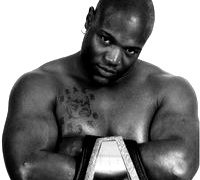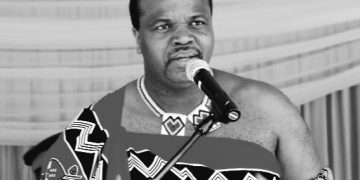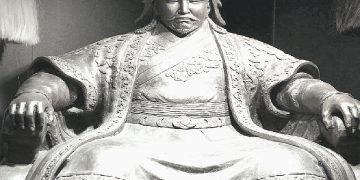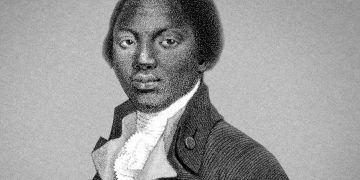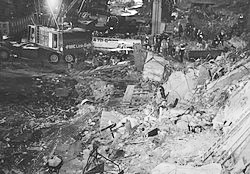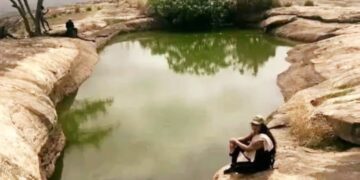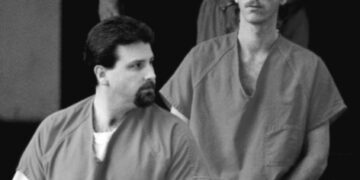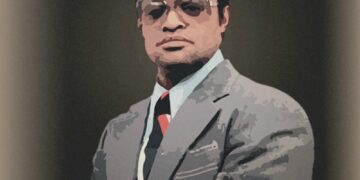Against the background of another manifestation of American aggression against a sovereign state, it is very interesting to turn to the history of such cases. After all, the United States is not the first year, or even far from the first decade, to practice interventions against the “wrong” states.
Panama Canal and a country without an army
The end of the 1980s was a time of major changes in the political life of the then world. The Soviet Union and the entire socialist system experienced a grave crisis. The withdrawal of troops from Afghanistan, the intensification of nationalist forces in the Union republics, Gorbachev’s experiments in the economy and social sphere showed the West that the Soviet state was finally weakening and could no longer play the role in world politics that it had before. Amid the weakening of the Soviet Union, the American leadership realized that it could act aggressively against any objectionable political regimes, completely not fearing a real reaction from Mikhail Gorbachev and his entourage.
On December 20, 1989, Operation Just Cause began an armed invasion of the US Army in the small Central American Republic of Panama. The operation lasted five days. It took the United States less than a week to overthrow the current regime in Panama and establish control over a tiny republic.
Recall that the balance of power in the United States and Panama was like a 100-pound amble, which came out against a sixth-grader. Even now, the entire population of Panama is just over 3.6 million. Since the beginning of the twentieth century, Panama has virtually no army of its own. This state of affairs is also the result of Washington’s policy. When the Panama Canal was built, the US leadership put pressure on the Panama authorities, claiming that Panama’s own armed forces would supposedly jeopardize the security of the canal itself.
For 48 years, since 1904, Panama has had only a national police force. However, in 1953, the Panama National Guard, a more militarized structure funded by the United States, was created on the basis of the police. The creation of the National Guard was required against the backdrop of the activation of communist rebels in the countries of Central and South America. Therefore, now the Americans did not skimp on financing the Panamanian National Guard. By the way, it was in the area of the Panama Canal that the famous “School of the Americas” was located, where instructors from the USA trained officers for the armies and police of almost all Latin American states.
The Life, Victory, and Death of General Omar Torrijos
However, in 1969, a military coup took place in Panama. The 40-year-old Colonel Omar Efrain Torrijos (1929-1981) came to power. A professional military man, Torrijos came to the service in 1947. The son of poor school teachers, he won a contest to study at a military school in neighboring Salvador. After graduating from college in 1951 he joined the rank of junior lieutenant to serve in the national police of Panama, and since 1953 he served in the National Guard.
Interestingly, Torrijos combined his successful military career with underground activities as the leader of the anti-imperialist circle of officers. Although apparently it was an officer quite loyal to the regime. In 1955, he, with the rank of lieutenant, became commander of the National Guard detachment for the protection of the Tocumen International Airport, and a year later he was appointed chief of security for the former president of Argentina, Juan Domingo Peron, who then lived in Panama.
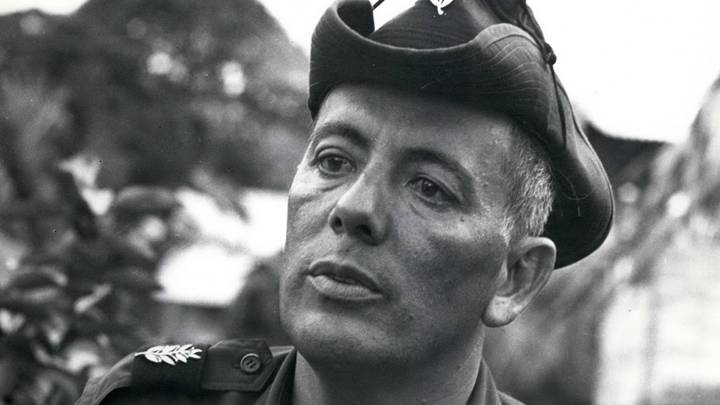
In this capacity, Torrijos received the rank of captain, and in 1960 became a major and was appointed to the post of commander of the 2nd military zone, which included the west coast of Panama in the canal area. Since February 1963, Torrijos commanded the 5th military zone, and in 1966, with the rank of lieutenant colonel, he became executive secretary of the Panama National Guard.
Having made a military coup and seized power in the country, Torrijos appropriated the rank of brigadier general and proclaimed himself the leader of the Panama Revolution. The main goal of Omar Torrijos was the nationalization of the Panama Canal and the maximum liberation of the country from the US dictatorship.
On September 7, 1977, in Washington, Omar Torrijos and US President Jimmy Carter signed the long-awaited Panama Canal Treaty and the Canal Permanent Neutrality and Operation Agreement, which provided for the gradual transfer of the canal zone to the jurisdiction of Panama. However, on July 31, 1981, the DHC-6 Twin Otte, on which General Torrijos flew, crashed under strange circumstances. Killed all seven people on board.
“Pineapple face”
Almost immediately after the death of Torrijos, the actual leader of Panama was Colonel Manuel Antonio Noriega, who served as head of the Directorate of Military Intelligence and Counterintelligence of the General Staff of the National Guard of Panama. Like Torrijos, Noriega came from a poor family, grew up in a slum quarter in the city of Panama, and from childhood dreamed of getting out of poverty. The only way for this at that time was only military service. While serving in the National Guard of Panama, he met with Omar Torrijos and earned his trust by becoming his assistant.
In Panama, Noriega was called for the eyes “Pineapple Face” – for the traces of the transferred smallpox on the face. Noriega was not very moral. He used drugs, led a rather dissolute lifestyle. Noriega, despite being a collaborator of Torrijos on the Panama Revolution, has collaborated with the US CIA on a paid basis since the 1960s. He ceased to receive money from American intelligence, already being the supreme leader of Panama in 1988.
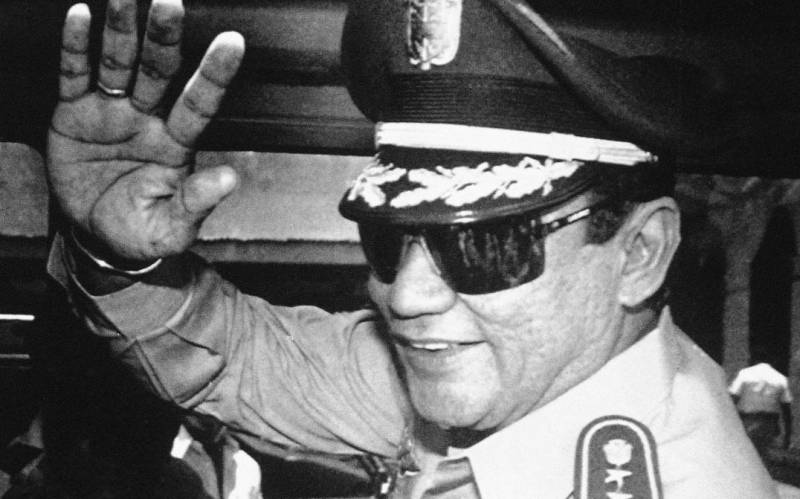
This was due to the fact that Noriega, despite his vices, nevertheless tried to pursue foreign policy as independent as possible from the United States. For example, he refused to give the US territory of Panama for subversive activities against the Sandinista government of neighboring Nicaragua. As a result, in July 1987, the United States announced the complete cessation of economic and military assistance to Panama, and in February 1988, the US Department of Justice Drug Enforcement Administration, Manuel Noriega, was charged with drug trafficking.
Of course, certain claims against Noriega were substantiated, the “Pineapple Muzzle” angel was definitely not. But the USA is a master of double standards, and if the dictator Anastasio Somosa was for Americans “his son of a bitch” at one time, like Rafael Trujillo, for example, then Manuel Noriega was among the “tyrants”, although he was not much different from most other military rulers Latin American states.
In April 1989, the United States imposed economic sanctions against Panama. In May 1989, opposition leader Guillermo Endara won the presidential election in Panama, but Noriega did not recognize the election results. Pro-American forces tried to organize a military coup, but it failed. That is, we see how the classical scheme of the American leadership was applied – the blackening of leadership, sanctions, and opposition speeches.
Thanks to such tactics, the Americans managed to provoke an economic crisis in Panama, but even this was not enough – it took a whole armed invasion of the US army in Panama to overthrow Noriega, capture it and show trial in the United States.
Operation Just Cause
When the facts were revealed that the US CIA was trying to conduct a military coup in Panama, Noriega sent a group of American citizens from the country. Then the US authorities began to evacuate all Americans from the country.
On December 15, 1989, Manuel Noriega in the Parliament of Panama announced that the country was actually at war with the United States. And the next day there was a provocative incident – Panamanian soldiers shot dead US Marine Corps Robert Paz, and his wife was raped.
This crime actually freed the hands of the American leadership. George W. Bush, then president of the United States, decided to launch Operation Just Cause against Panama. The operation involved 26 thousand US troops, 100 units of armored vehicles, 140 artillery pieces and mortars, 200 aircraft and helicopters. The main role was to play units of special forces, airborne troops and the US Marine Corps.
For comparison: the Panama National Defense Forces at the time of the events described totaled 12 thousand people, including 11 thousand in the ground units. They had only 30 armored personnel carriers, 50 artillery pieces, 23 aircraft and 20 helicopters.
Operation “Just Cause” began at 1:00 on December 20, 1989. US aircraft attacked the cities of Panama, Colon, Rio Ato and David, and 84 transport aircraft dropped parachute assaults from Panama 75th Ranger Regiment onto Panama. After that, personnel and armored vehicles of the 82nd US Airborne Division were landed from 27 aircraft in a landing way. In the morning of December 21, the Americans managed to seize the building of the General Staff of the Panama National Defense Forces. Although the Panamanian military resisted very fiercely, the numerical superiority of the Americans and the best weapons did their job.
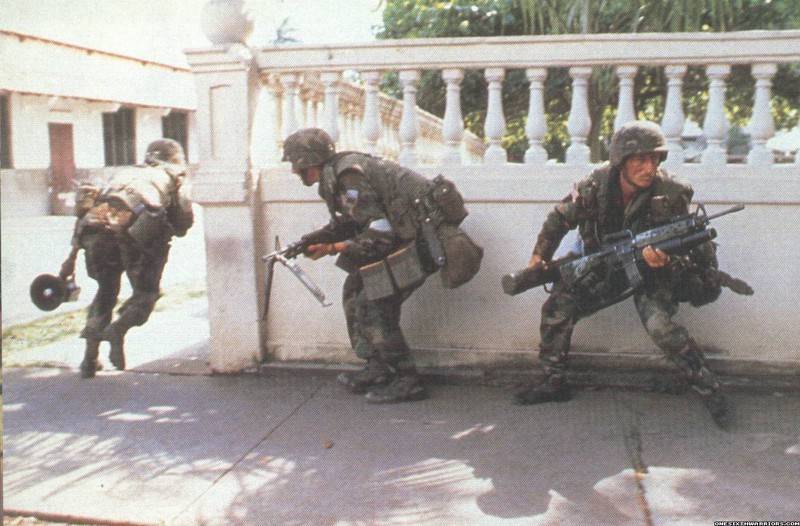
As a result of the operation, the loss of the American army amounted to 23 soldiers killed and 330 wounded. Killed 515 citizens of Panama, including 51 military personnel. Manuel Noriega hid on the territory of the Vatican’s diplomatic mission. To force him to leave the shelter, the US military for several days arranged round-the-clock broadcasting of rock music at full volume, making the stay in the embassy unbearable. On January 3, 1990, Noriega surrendered and was arrested by the U.S. military. He was taken to the USA.
On July 10, 1992 he was sentenced to 40 years in prison, but then reduced to 30 years. On August 28, 2007, a decision was made to extradite him to France, where Noriegue was also facing a sentence. On April 26, 2010 he was extradited to France, and already in 2011, he was extradited to Panama, wherein 1995 he was sentenced in absentia to 20 years in prison.
The health of Noriega, who was already under 80 years old, has deteriorated significantly. He suffered a stroke in 2012, but continued to be in prison. Only when he underwent surgery to remove a brain tumor, an elderly man was transferred to house arrest. On May 29, 2017, 83-year-old Manuel Noriega passed away.
Operation Just Cause has become one of the classic examples of US military interventions, disguised as “restoring democracy” and “protecting human rights.” Although before the invasion of Panama, the United States repeatedly resorted to such actions, including at the beginning of the twentieth century, when the American marines regularly landed in Central America to ensure the economic and political interests of the United States.

